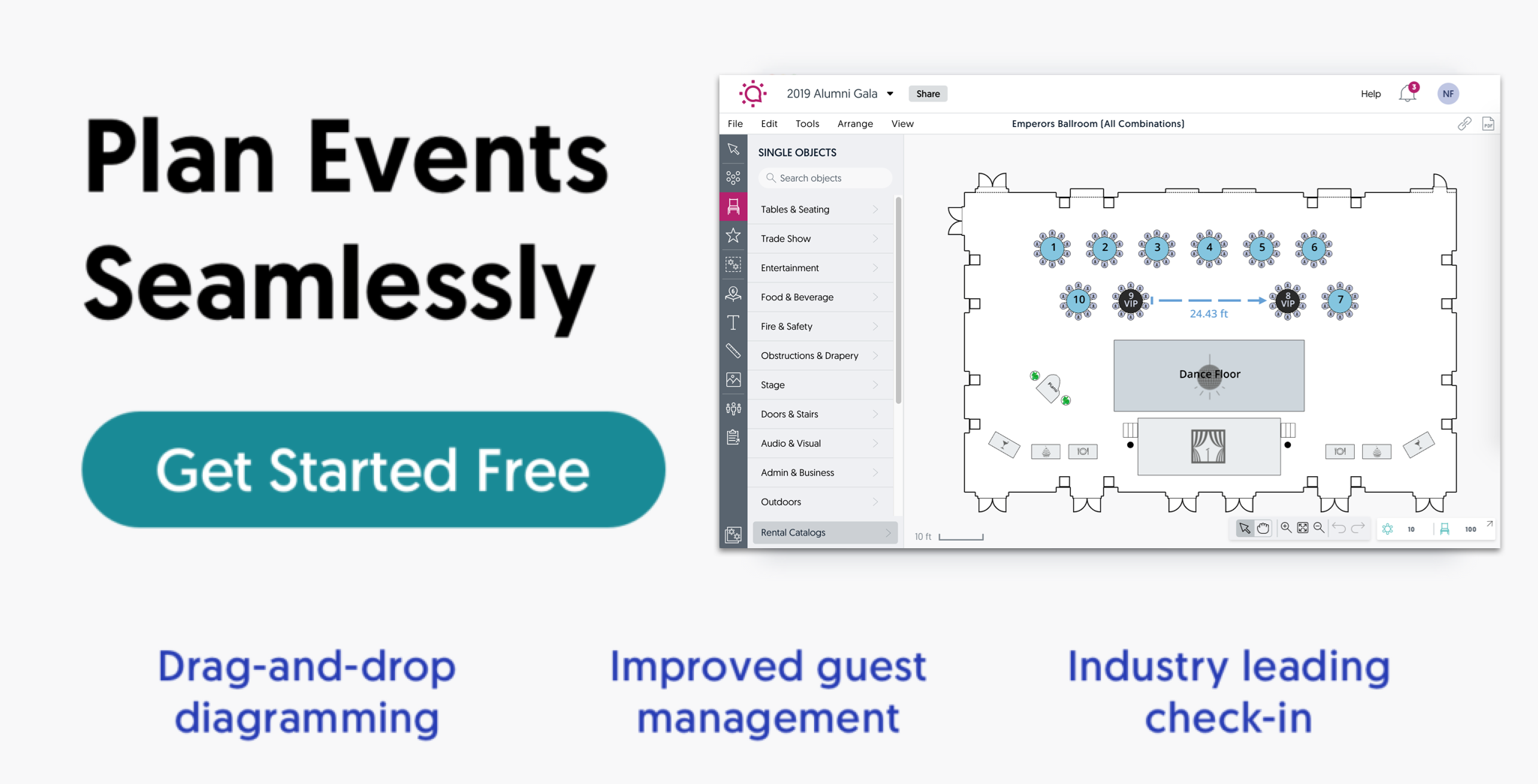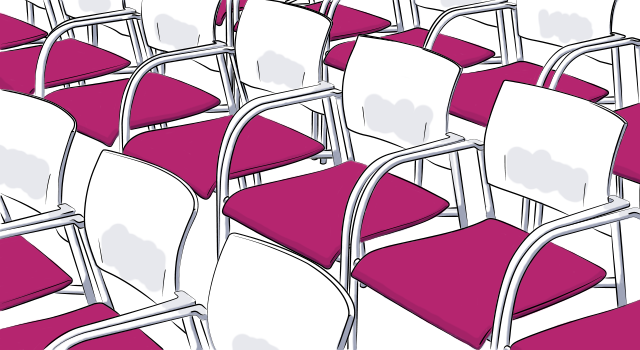
8 Must-Know Types of Seating Arrangements for Events
Seating arrangements have the power to make or break deals, relationships, and even event goals. “Much of getting what you want comes down to where (event attendees) sit,” says Brian Lee, Chief of Product Management at Lifehack. And where people sit depends on the type of seating arrangement that’s chosen for the event, meeting, conference, etc.
Read on to discover 8 must-know types of seating arrangements, along with expert advice from professional event planners. Plus, learn how the psychology of seating arrangements can help planners make the best possible choices when creating their event diagrams and floor plans.
How do you choose a seating arrangement type?
Choose the type of seating arrangement based on what activities you have planned for the event as well as how long the event will be and any specific needs attendees may have. For example, a week-long conference with lots of lectures won’t work with pod seating for every major agenda item, but a single-day creative workshop for a small team will.
Discover 8 types of seating arrangements all event professionals need to know:
Keep in mind that the type of seating arrangement you choose depends on the space you have available, your goals for the event, and what furniture you have at your disposal.
1. Chevron
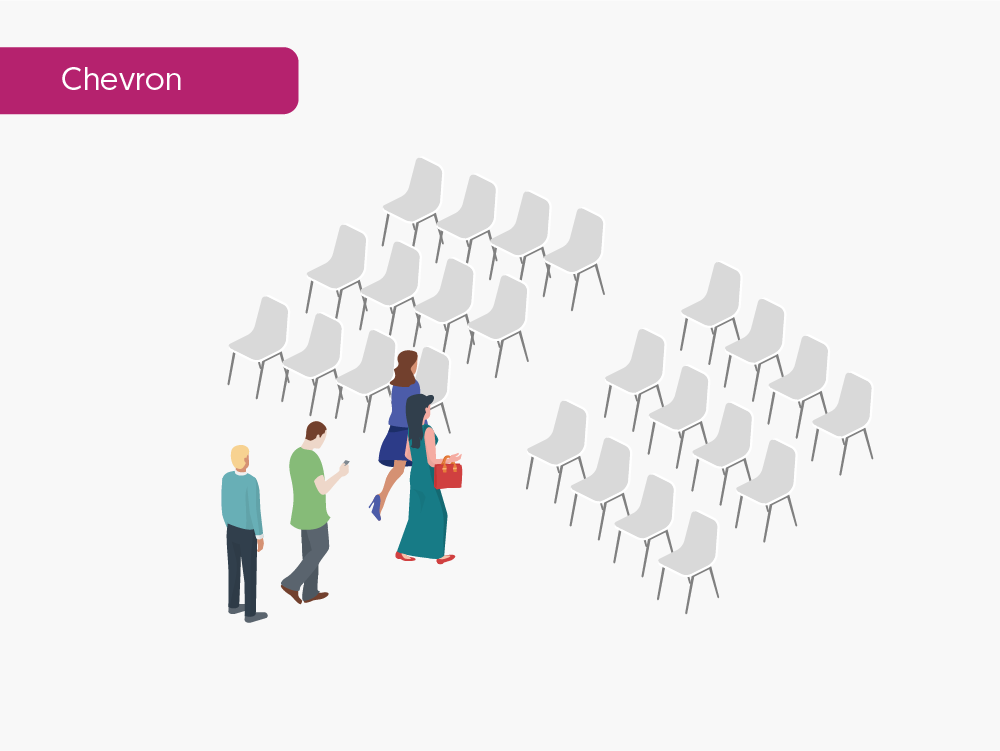
Chevron style seating offers two columns of short, angled rows with an aisleway down the middle. A successful strategy of many planners who use this seating arrangement style is to create a clear focal point front and center to direct attention towards a speaker, then strategically seat participants you’d like to group together for discussions.
Pros:
- Everyone can view the speaker and work in small groups as needed
- Maximizes space using angled rows
- Best of both worlds for presentations
Cons:
- Not ideal for large group discussions
- Attendees may have sightline issues if seats aren’t staggered
Best for:
- Trainings
- Presentations with audience participation
- Conferences
2. Auditorium
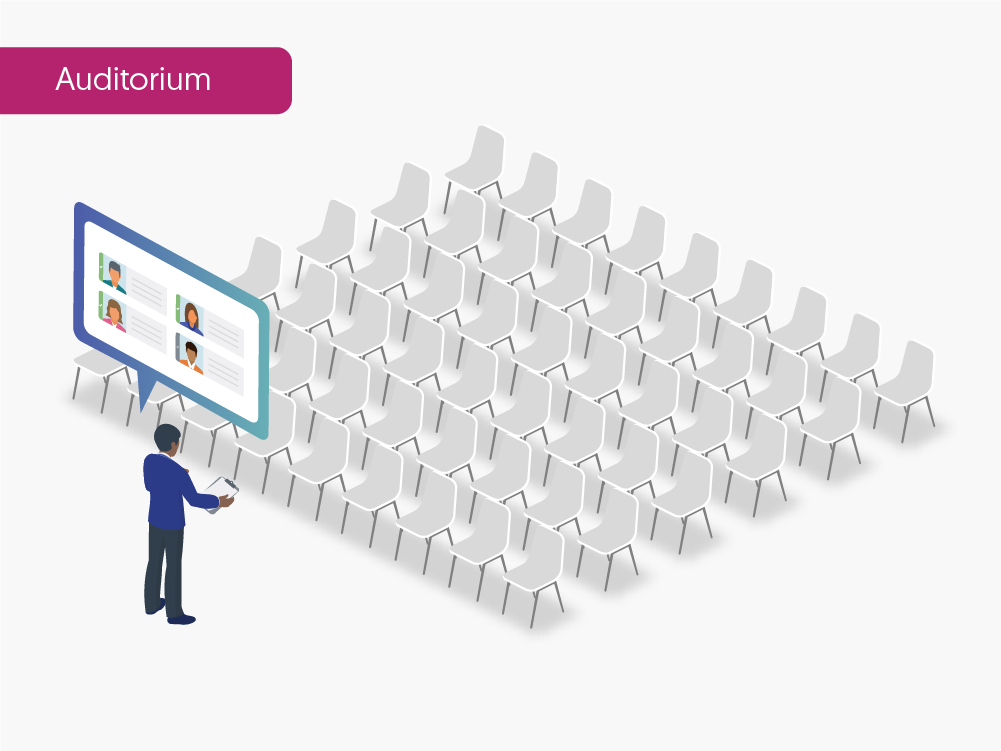
An auditorium style seating arrangement involves built-in seats or rows of chairs that face a single point of focus, which is typically a professional stage or a podium. Take advantage of stage space and set up a background that will be attractive for photos such as textured fabrics or logo prints.
Pros:
- Great for large groups, lectures or speaker series, and ceremonies
Cons:
- Sound can often be an issue
- Audience participation or group breakout sessions can be uncomfortable
Best for:
- Award shows
- Press conferences
- Product demonstrations
3. Banquet
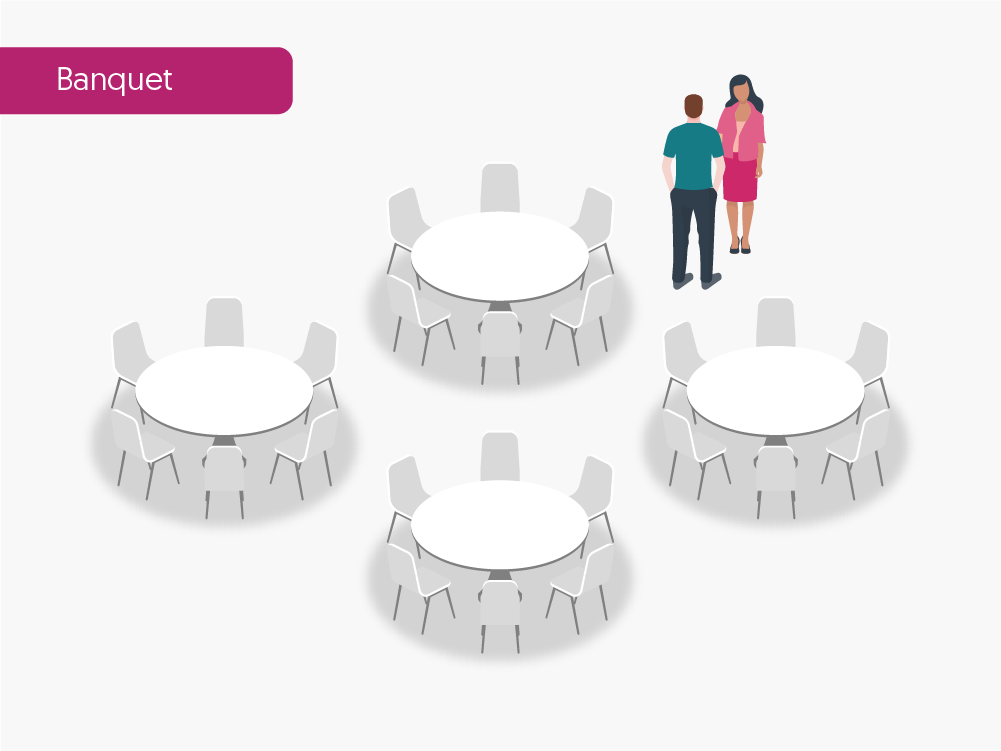
Banquet seating means using round tables evenly spread out throughout the space. Keep in mind that tables in banquet seating arrangements usually accommodate between 8-10 people. For best results, group together people who are familiar with each other, such as family members or co-workers. Otherwise, seat people according to shared interests such as hobbies or project goals to encourage natural conversation.
Pros:
- Socializing is easy and comfortable
- Ideal for networking and relaxing
Cons:
- Each table becomes an island, making it difficult to interact with other tables unless prompted to do so
Best for:
- Weddings
- Parties
- Award shows
- Banquets
- Charity events
4. Boardroom
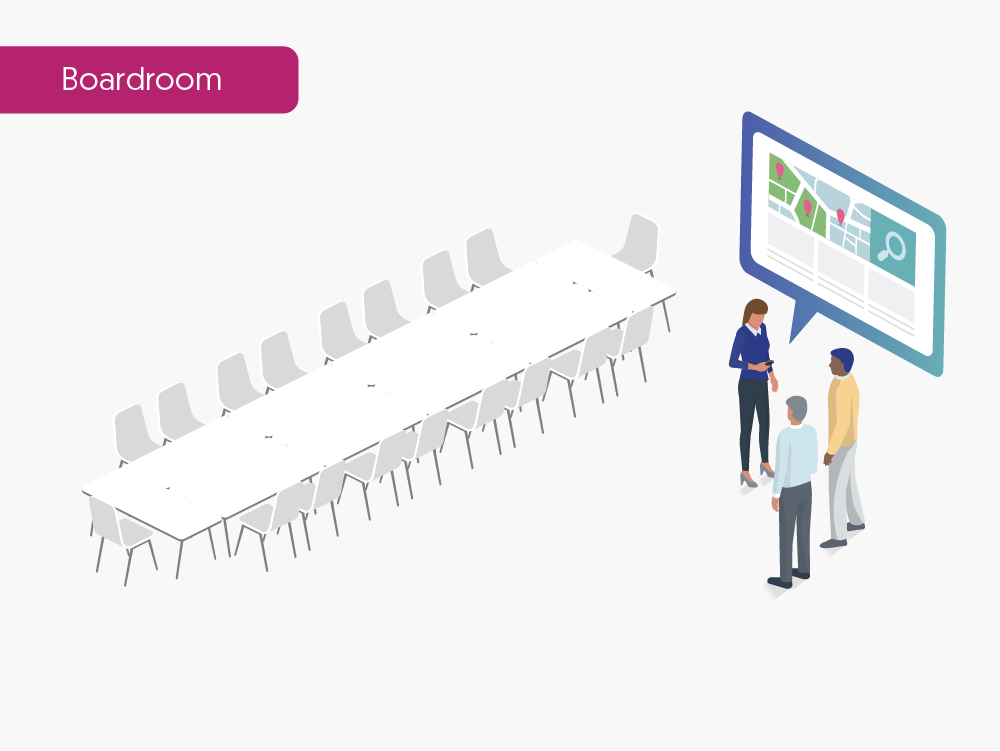
Boardroom and conference seating offers one long, rectangular table for guests to sit facing each other. Keep the following principles of conference seating psychology in mind when creating your seating chart:
- The VIP should sit at the head of the table
- The VIPs’ closest advisors should flank them
- People in the middle or towards the opposite end will spend most of their time listening
- Anyone sitting opposite the VIP will likely feel inclined to disagree with them, but if not, they should be a verbal supporter so that others take note
Pros:
- Facilitates discussion
- Directs focus to one person
- Offers strategic placement for business meetings
Cons:
- Not ideal for long visual presentations
- Can lead to group disagreements if the VIP and the person sitting opposite don’t see eye to eye
Best for:
- Brainstorming sessions
- Small team meetings
- Strategic mergers
- Influencing those seated in the middle to agree with the VIP
5. Cabaret
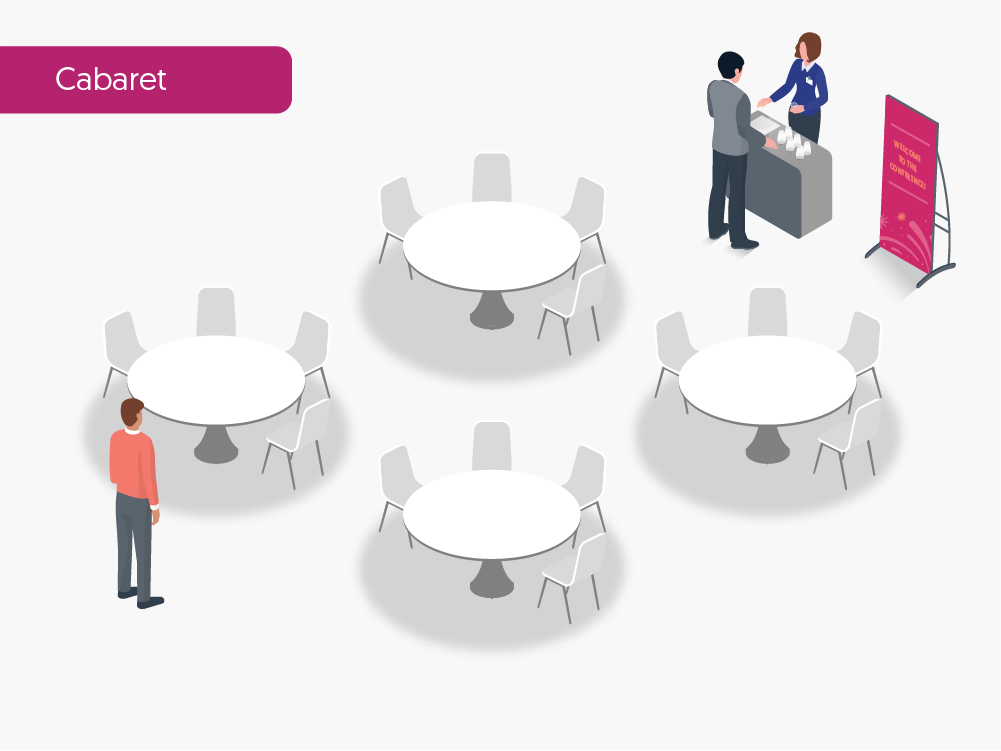
Research from Cornell University found that physically sitting (or standing) closer to someone makes you feel emotionally closer to them too, which may explain why cabaret style seating at events helps build relationships. Whether you choose cocktail tables for your entire space or mix them in with other seating types, make sure to place the chairs in a U-shape around them with an opening that faces a chosen focal point.
Pros:
- Socializing is encouraged yet guests can remain focused on performances or presentations
- Has a laidback and organic feel to it
Cons:
- Doesn’t maximize space
Best for:
- Award shows
- Passive training presentations
- Live entertainment
6. Classroom
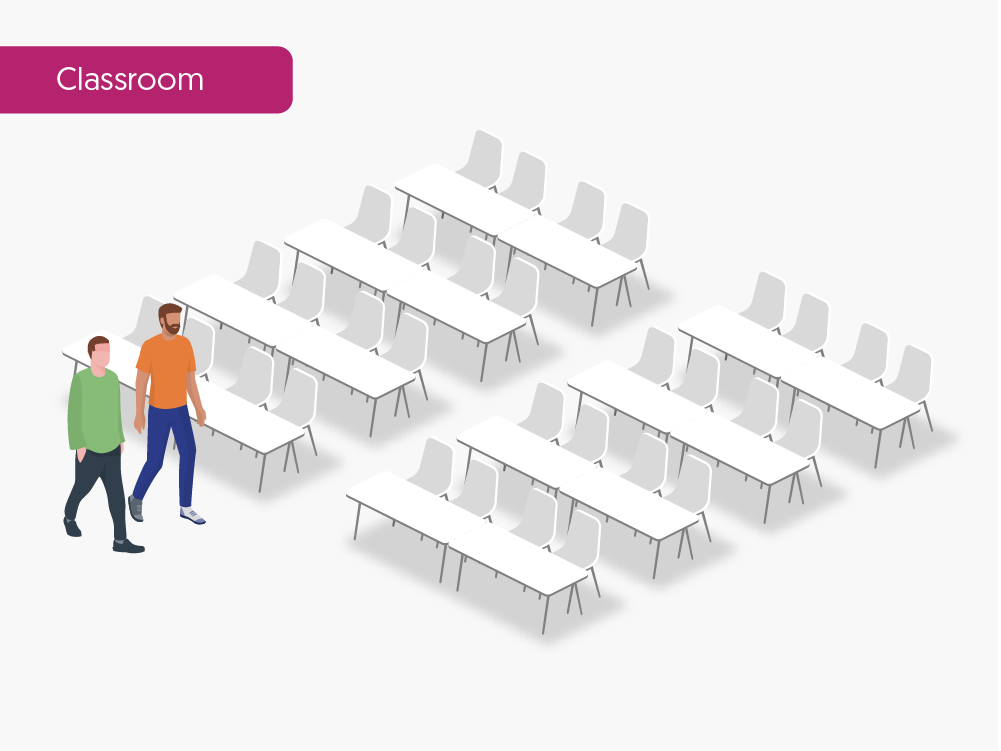
A study published in the Social Psychology of Education proved that “teachers need to be informed about the possibly preventive and intervening effects of a seating arrangement on students’ academic and social behaviors.” This means event planners should also pay special attention to the type of seating arrangement they choose, since it has a direct impact on participant aptitude and actions in a learning environment. For best results, limit small tables to four attendees and leave at least three feet of space between each seat at long tables.
Pros:
- Focuses attention to the front of the room
- Naturally primes attendees for learning
- Ideal for note-taking
Cons:
- Tends to feel overcrowded if attendees aren’t properly spaced out
- Can feel too nostalgic for a professional setting
Best for:
- Group trainings
- In-person certifications
- Product information workshops
7. Hollow square
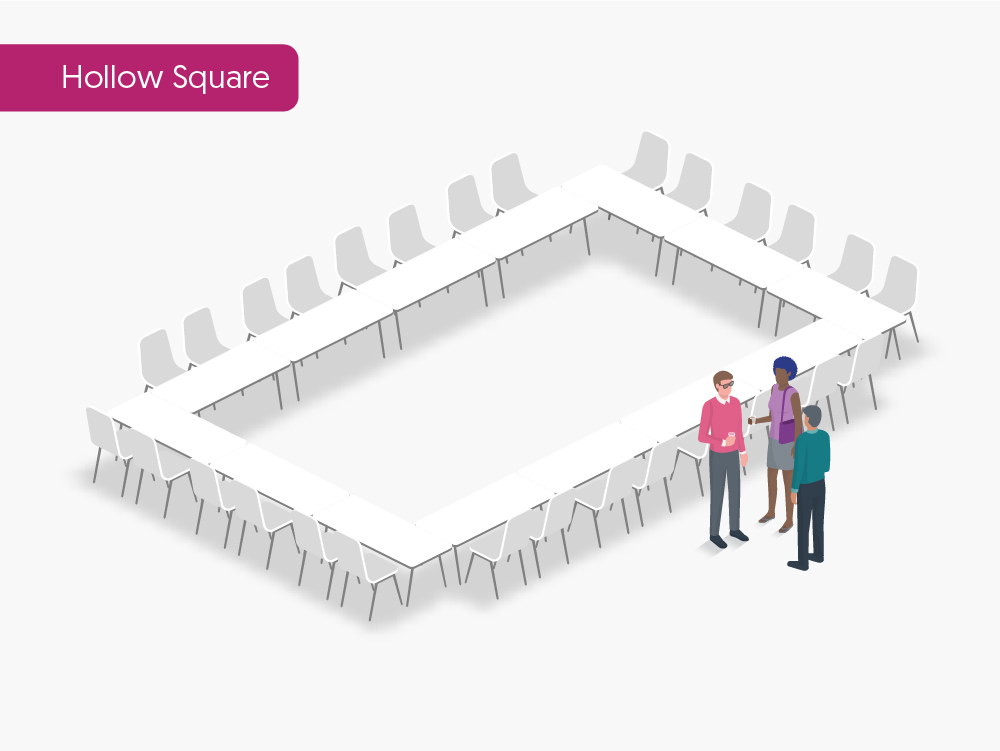
Similar to both banquet and U-shaped style seating, the hollow square style looks exactly how it sounds. Everyone can see each other while maintaining a comfortable distance, which makes it ideal for eating meals or working on laptops. Use this seating arrangement type for groups that would be too crowded at a regular banquet table and to give those sitting on each end some extra elbow room.
Pros:
- Supports eating and working
- All attendees are visible to one another and can have comfortable discussions
Cons:
- Doesn’t work well with presentations
- No clear leadership seat or focal point
- Doesn’t maximize floor space
Best for:
- Collaborative meetings with fewer than 30 guests
- Working lunches
- Workshops
8. U-shaped
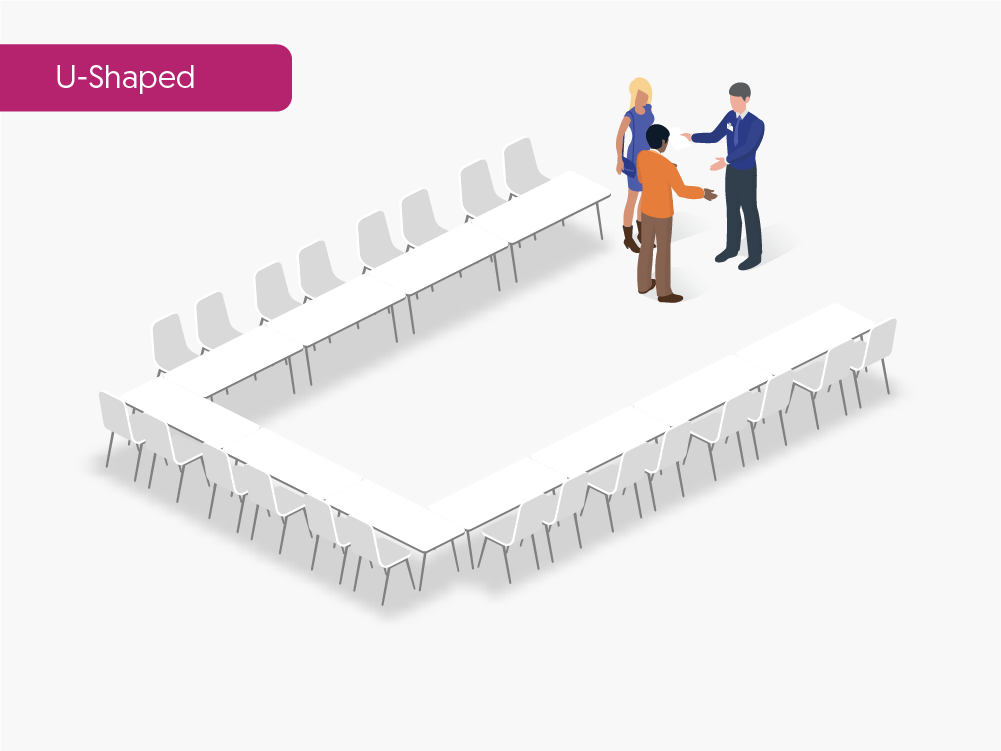
U-shaped or horseshoe seating features a group of tables in the shape of a box with a hollow center and one open end. Make up for the loss of floor space by placing decorative or presentation materials on the walls. Use this type of seating arrangement for attendees who have worked together before or are planning to do so in the near future to facilitate relationship-building.
Pros:
- Ideal for both presentations and group collaboration
- Everyone can see each other at all times
- Audience can comfortably interact with speakers
Cons:
- Requires a facilitator or designated leader to help keep the dialogue going
- Not suitable for large groups over 30 participants
Best for:
- Team meetings
- Presentations
Create the perfect seating arrangement for every event!
Now that you know about some of the main types of seating arrangements, what they look like, and the pros and cons of each, it’s time to check out some seating tips and trends from accomplished planners for even more inspiration.
